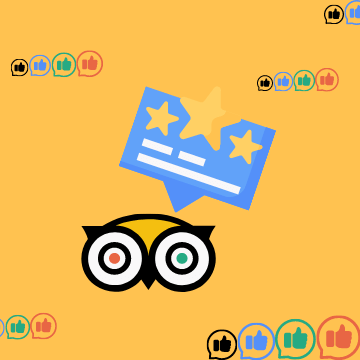
Chatbots are nothing new in the travel and tourism industry.
Expedia’s chatbot technology has fueled over 29 million virtual conversations over the years, saving more than eight million hours in agent time.
They aren’t just for tier 1 customer service.
But when ChatCPT entered the market in November 2022 and attracted a record 100 million active users, the travel industry was quick to pay attention. ChatGPT’s human-like way of communicating and easy accessibility presented an interesting opportunity for tourism businesses.
Which brings us to the question: What’s the future of chatbots for tours and attractions? In this article, we’ll explore the benefits and challenges of deploying chatbots in tourism.
Why are chatbots the future for tour and activity operators?
Chatbots are evolving past their initial role as virtual customer service agents. They’re suggesting destinations based on customers’ preferences, providing detailed itineraries, and even making personalized upsells and cross sells.
This is all to say that tour and attraction operators can leverage chatbot technology in a multitude of ways.
How chatbots are currently used by tour operators and attraction providers
Chatbots are no longer a novelty: They’ve become standard features on tour operator websites, customer service channels, and OTA platforms.
From a customer service standpoint, chatbots can handle inquiries, provide instant responses to common questions, and guide travelers through the booking process. They can help personalize an itinerary based on traveler requests and answer frequently asked questions 24/7.
As a result, they’re making the online booking process a lot simpler, too.
AI-driven bots can analyze customer preferences and behavior to offer tailored recommendations. Kayak’s integration with ChatGPT, for example, provides personalized recommendations based on a user’s search criteria and KAYAK’s historical travel data.
Finally, the multilingual functionality allows operators to cater to a global audience. These chatbots can translate inquiries and messages in real-time, breaking down language barriers and making communication more accessible.
Chatbot adoption and customer satisfaction statistics
The travel industry is witnessing a surge in chatbot adoption, and the numbers tell a compelling story:
- By 2020, 25% of travel and hospitality companies worldwide were using chatbots to enhance their customer experience.
- Meanwhile, 87% of users would interact with a travel chatbot if it could save them both time and money.
- In general, 88% of customers have had at least one conversation with a chatbot within the past year.
- A survey by Tidio revealed that 53% of respondents find waiting too long for replies the most frustrating part of interacting with business chatbots.
- The top five chatbot-using countries are the U.S., India, Germany, the U.K., and Brazil.
Benefits of embracing chatbots
Here are the many ways in which tour operators can benefit from them:
- Free up your staff’s time on mundane support tasks and reduce operational costs: Chatbots can take care of the most frequently asked questions, allowing your customer service staff to focus on more pressing issues. This not only improves communication with guests but can also reduce the number of agents you need to hire.
- Cater to customers in different timezones: Chatbots never sleep. They are available round the clock to answer inquiries, which means you can answer customer queries at all hours of the day, no matter where they are in the world.
- Provide a more tailored experience: Being able to communicate in the traveler’s native language and providing personalized recommendations elevates your customer experience. And it certainly will set you apart from your competitors. This level of personalization strengthens customer loyalty and increases the likelihood of repeat bookings.
3 chatbot use cases that go beyond customer service
Yet chatbots have already evolved past their initial role as customer service agents. They’re now proving their worth in functions beyond guest inquiries and support.
1. Personalized recommendations
Chatbots can now analyze user data to suggest destinations, activities, and accommodations that align with travelers’ interests.
An example is Kayak’s integration with ChatGPT, which allows travelers to ask questions that would be normally directed at a travel agent. Whether researching flights, hotels, or rental cars, they’ll receive personalized recommendations based on their search criteria and KAYAK’s historical travel data.
2. Customer feedback analysis
Chatbots can process large volumes of feedback data to help operators identify trends, concerns, and areas for improvement.
eBay, for example, uses a chatbot to direct customers to a custom feedback form page. The brand then uses AI to analyze the feedback and understand where there’s room for improvement.
Similarly, operators can leverage chatbot technology to analyze guest conversations, as well as guest review data. If you wanted to measure the sentiment on a satisfaction survey you sent out after the tour, for instance, you could drop the survey responses into ChatGPT and ask the chatbot to do a sentiment analysis for you.
3. Business intelligence data mining
Tour operators can also start leveraging chatbots to collect and interpret customer feedback, social media, and website interactions.
ChatGPT Plus, which is the paid version, for example, has an advanced data analysis feature that facilitates this. Operators can feed the chatbot raw data, such as your customer survey responses, and then through a series of prompts, you can get an analysis.
Pro Tip: When you are feeding data into an LLM that you don’t own, you may want to remove any proprietary customer or financial data.
Meanwhile, airlines leverage AI technology to predict demand and price their tickets accordingly. This helps them maximize revenue and fill more with these new functionality seats. With real-time analytics, airlines can respond faster to evolving market conditions and take advantage of these changes quicker than ever before.
Key chatbot challenges and ways you can solve for them
Chatbots have become powerful tools for tour and activity operators. However, along with their many benefits come several challenges. Let’s explore a few of these key challenges and how to overcome them.
Privacy concerns
Customers want to know how their information is being used and shared.
To address this, operators should be transparent about their data usage. Ensure your chatbot complies with relevant data protection laws like GDPR, and communicate your usage policies to your guests.
It’s also important to invest in data storage security and provide customers with the option to delete their data.
Data security
Safeguarding customer data from security breaches is a top priority. A breach can damage customer trust and lead to legal consequences. Invest in data security measures like encrypting data transmission and storage, using secure servers, and keeping your software updated.
Don’t forget to set regular security audits and penetration testing on your calendar. In the event of a breach, have a response plan in place that your staff is fully aware of.
Also be aware that entering sensitive third-party or internal company information into ChatGPT means it’ll become part of the chatbot’s data model. Everything that goes into ChatGPT risks being shared with users who ask relevant questions. Keep that in mind when you’re interacting with the chatbot.
Technical implementation and ongoing maintenance
Setting up a chatbot can be technically challenging. Plus, technological hiccups do happen, meaning every chatbot will require some kind of ongoing maintenance.
The easiest way to tackle this is to seek help from experienced professionals or companies specializing in chatbot development for the initial setup.
Fine-tuning your LLM
Chatbots use large language models (LLMs) to understand and respond to customers. But they’re still not humans. You need to train your bot with a lot of data to interact with customers in a way that aligns with your brand voice.
This involves continuously training and fine-tuning your chatbot’s language model; analyzing chat logs to identify frequent misinterpretations and even working with experts to optimize your model.
Employee morale
Chatbots have been around for some time now, but that doesn’t mean your staff is ready for a new virtual co-worker. Your frontline staff, specifically, may worry that chatbots will replace their roles, which can impact overall team morale.
Operators should carefully communicate the goal behind their chatbots: They are tools to support staff, not replace them.
To reinforce this, provide training to your employees on how to work alongside chatbots and leverage them to get their work done more efficiently. Remind your staff that they will now have more room to focus on tasks that require creativity and a truly human touch.
Addressing biases in chatbot interactions
Chatbots can inadvertently perpetuate biases present in their training data, which can result in unfair or offensive interactions.
This is why it’s so important to regularly audit chatbot interactions. It’s the operator’s job to identify and correct biases to ensure fair representation. It could help to work with experts who are trained in reducing biases and providing sensitivity training to the chatbot — a great idea for your staff, too.
Ensuring accessibility for all travelers
Some travelers may have disabilities that affect how they interact with chatbots.
When designing or investing in a chatbot, ensure that it is made with accessibility in mind. For example, you can provide options for text and voice interactions, and make the chatbot outputs compatible with screen readers.
Emerging trends in Chatbot technology
The future of chatbots in travel is vast. AI technology is paving the way for hyper-personalized customer support, from recommending the ideal destination for a honeymoon vacation to suggesting the best walking tour for a family of four.
On the operator end, multilingual support and AI-powered marketing are helping travel businesses expand their reach and build stronger customer relationships. The following trends will continue to emphasize this:
Natural Language Processing (NLP) advancements
NLP enables chatbots to understand and respond to human language more naturally. In some cases, the conversation flows so smoothly that guests may have a hard time differentiating between the chatbot and a customer service agent.
Tour operators can leverage NLP algorithms to analyze customer data and preferences, and then provide personalized recommendations that enhances the guest experience.
Or travelers can use AI-powered tools like GuideGeek to plan their own tailor-made vacations. In this example, a traveler spent a day in Kyoto based on recommendations from GuideGeek, which provided the best places to stay and eat as well as advice on how to avoid crowds.
Integration with Virtual Reality (VR) and Augmented Reality (AR)
Chatbots are increasingly integrated with VR and AR technologies. We’re seeing more immersive experiences and virtual exploration of destinations — like the ability to explore a hotel room before checking in, which gives guests the extra confidence needed to book.
At Hub hotels by Premier Inn, augmented reality is used to create interactive wall maps that provide information about a specific place guests can visit. Hotel guests can download the Hub Hotel app on their smartphone and use it to receive tips and other information about tourist sites in their destination.
Meanwhile, virtual tours allow operators to reach a wider audience and make additional revenue. The British Museum, for example, has a virtual tour of its art collection, making it accessible to art-lovers around the world.
Voice-activated assistants
The rise of voice-activated chatbots like Amazon’s Alexa and Google Assistant are also reshaping how guests plan their trips. Travelers can now use voice commands to retrieve booking information, rent a car, and more through Expedia’s integration with Alexa, for instance.
Overall, voice interactions can make a customer service experience feel more natural than communicating with a text-based computer program.
Emotional recognition and response
Chatbots are becoming more emotionally intelligent, recognizing customer emotions and responding empathetically based on text or voice inputs.
For example, a recent study found that Gen Z women respond better to “friendlier” chatbots: When shopping for cosmetics online, receiving support from a friendly chatbot had a more positive effect on their body image and self-esteem.
When a chatbot understands the emption behind a query — such as recognizing that a customer is frustrated — it can better tailor its response to that particular situation.
***
Chatbots are here to stay. There’s no doubt about it.
Now, the question is: Are you ready to harness their power? You can count on us to keep you up to date with the latest AI developments as we explore the future of tourism chatbots and track their evolution within travel.





